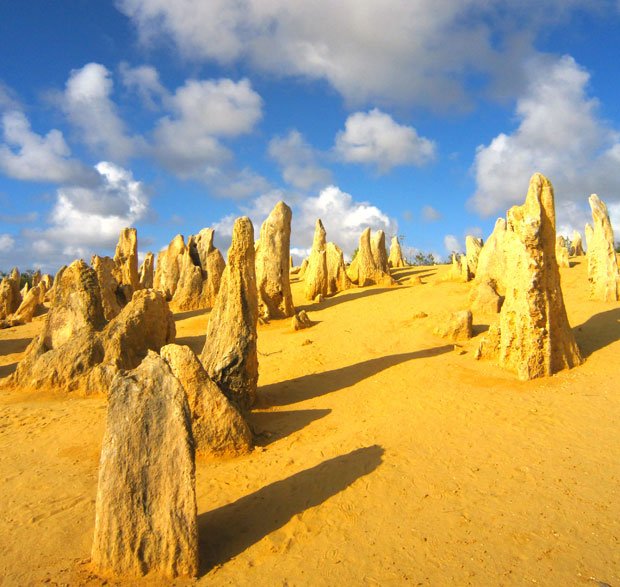An eerie experience in the desert

AG’s deputy editor takes a trip to southwest WA and reports back on some of the natural wonders that are worth checking out next time you find yourself near Perth.
A CACOPHONOUS FLOCK OF bright pink and grey gallahs provide a stark contrast to the bleak desert landscape of the the Pinnacles Desert, 250 km north of Perth in Nambung National Park. It’s taken almost four hours to get here and the sun is slung low in the sky. I’m here to see the fabled pinnacles themselves, and I feel like I’ve stepped straight onto the set of a science-fiction film.
Nambung NP is a notable biodiversity hotspot. The pinnacles themselves are thousands of limestone pillars that rise out of the deep yellow sand of the desert. Experts are still at a loss to explain precisely how they formed.
What they do know is that the pinnacles were born inside sand dunes, when acidic rainwater leached down, cementing the lime-rich sand and binding it into clumps of tamala limestone. Vegetation on top of the dunes helped things along, by holding them together and by creating an acidic layer of decomposing plant debris. Bushfires most likely burnt away the vegetation on top of the dunes, allowing the sand to be slowly blown away, leaving the limestone pillars behind.
The big remaining mystery is why the pinnacles have formed here and a few other locations, but are not a common feature of coastal sand dune environments.
The discovery of aboriginal artifacts at the site suggests that the pinnacles were exposed 6000 years ago, but were then re-buried by shifting sand dunes until being revealed again several hundred years ago. This process is evident today with winds from the southwest uncovering pillars in the north of the desert, while burying those in the south.

